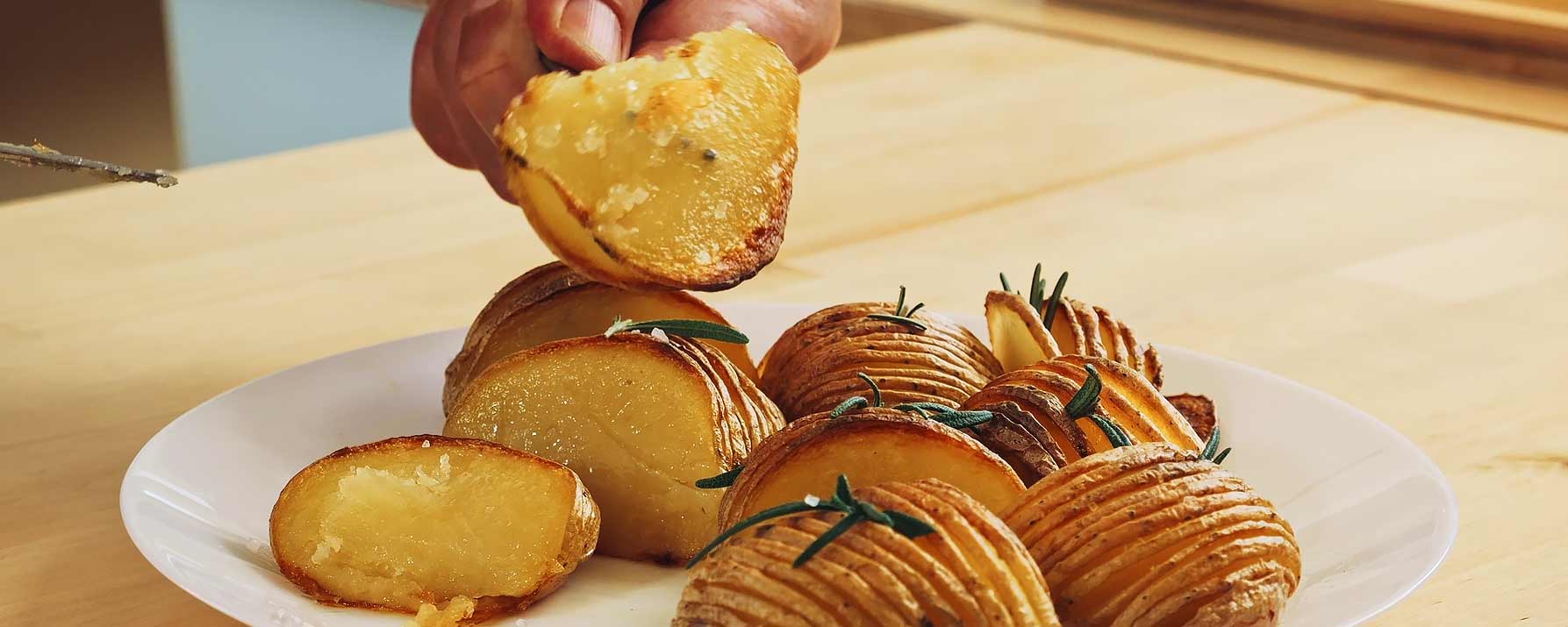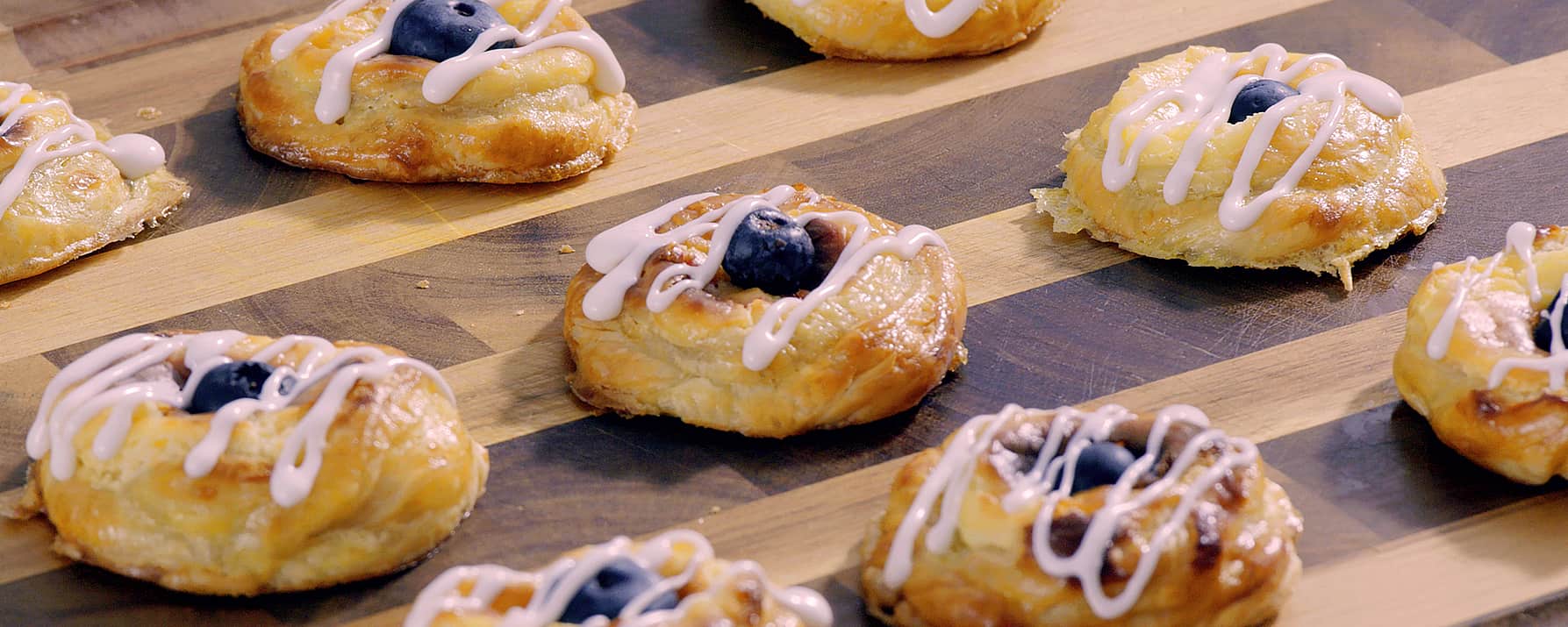There's something almost magical about a perfectly baked potato. The crispy skin, the soft and fluffy center, the burst of steam when you cut it open — it's simple food that never goes out of style. Whether you like yours topped with butter and a pinch of salt or loaded with cheese, sour cream, and bacon, baked potatoes have a way of satisfying like few other dishes can.
Most people automatically reach for their full-sized oven when they're in the mood for baked potatoes. But here's the thing: you don't actually need it. A toaster oven can handle baked potatoes just as well — sometimes even better. It uses less energy, heats up faster, and doesn't turn your whole kitchen into a sauna, which is especially lovely in the summer.
Once you've mastered the art of baking potatoes in a toaster oven, you'll discover just how versatile they are. Cut them open and fill them with your favorite toppings for a quick meal. Mash them into creamy comfort quick food. Dice them up for breakfast hash, toss them into a salad, or even blend them into a silky soup. Baked potatoes aren't just a side dish; they're a source for creativity in the kitchen.
This guide will walk you through everything you need to know — from choosing the right potatoes and prep techniques to cooking methods, global variations, and topping ideas. By the end, you'll be ready to bake the fluffiest, crispiest potatoes ever, using nothing more than your trusty toaster oven.
Why Toaster Ovens Are Perfect for Baked Potatoes
Toaster ovens don't get nearly enough credit. These compact kitchen heroes can do a lot more than toast bread. They preheat quickly, cook evenly, and use far less electricity than their full-sized counterparts. When cooking for one or two people, or preparing just a couple of side dishes, a toaster oven is often the smarter and more efficient choice.
Here's why toaster ovens are ideal for baking potatoes:
- Quick heating: Because they're small, they reach temperature much faster than a standard oven.
- Energy efficiency: Less space to heat means lower energy bills and a greener kitchen.
- Even cooking: Many modern toaster ovens include convection fans that circulate hot air, ensuring potatoes cook evenly and skins crisp beautifully.
- Year-round comfort: You won't overheat your kitchen on a warm day.
Pro Tip: If you're using a HeatMate toaster oven, you skip preheating altogether. Its graphite heating technology reaches 550°F in just fractions of seconds, so you get instant, blazing-hot heat with the twist of a knob.
Choosing the Right Potato

The type of potato you choose will make a huge difference in texture, flavor, and even cooking time. Some are starchy and become light and fluffy when baked. Others are waxy and creamy, holding their shape better. When you pick the right kind for your selected recipe, it is the first step to perfection.
Russet Potatoes: The Classic
Russets are what most people think of when they picture a traditional baked potato. They're big, starchy, and reliable.
- Texture: Light and fluffy inside, with a skin that crisps beautifully.
- Flavor: Mild and neutral, ready to soak up butter, sour cream, and seasonings.
- Best for: Loaded baked potatoes, mashed potatoes, and homemade fries.
- Nutrition: High in carbohydrates, a great source of potassium.
Russets are the steakhouse favorite for good reason.
Yukon Gold Potatoes: Naturally Buttery
Yukon golds bring a little luxury to the table with their naturally golden flesh and rich, buttery taste.
- Texture: Creamier and denser than russets.
- Flavor: Slightly sweet and naturally buttery.
- Best for: Roasted wedges, creamy mashed potatoes, gratins.
- Nutrition: Packed with Vitamin B6 and potassium.
These are the go-to choice when you want indulgent, silky potatoes.
Red Potatoes: Small but Mighty
Red potatoes are small and thin-skinned, which means you don't have to peel them. They're fantastic for roasting and salads.
- Texture: Smooth and creamy.
- Flavor: Earthy and slightly sweet.
- Best for: Roasted vegetable medleys, potato salads, and casseroles.
- Nutrition: Rich in Vitamin K, niacin, and fiber.
They hold their shape beautifully, making them perfect for chunkier dishes.
Purple Potatoes: A Colorful Surprise
Purple potatoes aren't just pretty — they're also nutritious and flavorful.
- Texture: Slightly drier than red potatoes but still creamy.
- Flavor: Mild with a hint of nuttiness.
- Best for: Colorful roasted sides, salads, and potato mixes.
- Nutrition: Loaded with antioxidants, potassium, and fiber.
They turn a simple dish into a visual showstopper.
Sweet Potatoes: A Whole Different Experience
Sweet potatoes, often called yams, aren't technically potatoes, but they deserve a spot here.
- Texture: Creamy and soft when baked.
- Flavor: Naturally sweet with earthy undertones.
- Best for: Sweet casseroles, roasted wedges, breakfast bowls.
- Nutrition: High in Vitamin A, beta-carotene, and fiber.
Their natural sweetness pairs beautifully with both savory and sweet toppings.
Prepping Your Potatoes

A little prep work ensures the best possible results: crispy skins, tender interiors, and no messy surprises.
- Scrub thoroughly: Potatoes grow underground, so dirt is a natural part of their growth. Use a stiff brush under running water.
- Dry completely: Moisture on the skin creates steam instead of crisping.
- Trim blemishes: Use a paring knife to remove dark spots or sprouts.
- Poke holes: Pierce each potato 3–4 times with a fork to let steam escape. Otherwise, it may lead to messy explosions inside your oven.
Techniques for Baking Potatoes
Depending on your mood, the size of your potatoes, and the dish you're aiming for, there are several ways to bake them.
Whole Baked Potatoes
For a classic, steakhouse-style potato:
- Brush potatoes with olive oil and sprinkle them generously with salt.
- Bake at 400°F for 30–50 minutes, depending on size.
- Potatoes are done when a fork slides in with no resistance.
- Split open, fluff with a fork, and add your favorite toppings.
Roasted Potato Cubes
Perfect for breakfast hashes, side dishes, or meal prep.
- Cut Yukon gold or red potatoes into bite-sized cubes.
- Toss them with salt, pepper, olive oil, and add herbs like rosemary or thyme.
- Spread evenly on a baking sheet.
- Roast at 425°F for 20–30 minutes, flipping halfway through.
Add carrots, bell peppers, or onions to make it a whole roasted vegetable medley.
Crispy Potato Wedges
- Slice potatoes into thick wedges, leaving some skin on for texture.
- Coat with oil and spices such as smoked paprika or garlic powder.
- Arrange in a single layer, skin side down.
- Bake at 450°F for 15–30 minutes, flipping them halfway through.
Serve with ketchup, aioli, or your favorite dipping sauce.
Homemade Potato Chips
- Thinly slice potatoes using a mandoline or a sharp knife
- Coat with oil lightly and sprinkle with salt.
- Spread slices evenly on a baking sheet.
- Bake for 8–12 minutes at 450°F, closely monitoring the dish through the glass window to prevent burning.
- Cool on a wire rack for extra crispiness.
Global Potato Inspirations

Potatoes are a worldwide staple, showing up in cuisines everywhere. Here are a few international dishes you can recreate with your toaster oven:
- 🇪🇸 Patatas Bravas (Spain): Crispy cubes of potato covered in spicy tomato sauce made with garlic, onions, paprika, and chili powder.
- 🇨🇦 Poutine (Canada): Fries topped with rich brown gravy and squeaky cheese curds.
- 🇱🇧 Batata Harra (Lebanon): Roasted potatoes tossed with garlic, chili, and fresh coriander.
- 🇬🇷 Greek Lemon Potatoes: Wedges roasted in a mixture of lemon juice, chicken broth, and oregano for a tangy, herby flavor.
- 🇸🇪 Hasselback Potatoes (Sweden): Thinly sliced whole potatoes are baked until fanned out and crispy. Here is your toaster oven recipe.
- 🇰🇷 Korean Sweet Potatoes: Baked whole and lightly salted, a typical street snack.
Step-by-Step Recipes
Twice-Baked Potatoes
Like deviled eggs, but with potatoes — baked, stuffed, and baked again.
- Bake russet potatoes at 350°F for 40 minutes.
- Slice open lengthwise, scoop out the insides.
- Mix scooped potato with butter, cheese, sour cream, and seasoning.
- Spoon the mixture back into the skins.
- Bake for an additional 10 minutes, or until golden and bubbly.
Loaded Potato Skins
Great for parties, game days, or just a fun snack.
- Bake medium potatoes until tender.
- Slice potatoes in half, scoop out most of the inner flesh, leaving a thin layer inside.
- Brush pieces with melted butter and season with garlic powder or seasoned salt.
- Fill with cheese and bacon, bake until crispy.
- Top with sour cream and fresh chives before serving.
Hasselback Potatoes
A stunning dish with layers of crispy, golden slices.
- Place the potato between two chopsticks to prevent cutting all the way through.
- Slice thinly into medallions.
- Brush the medallions with olive oil, sprinkle with salt and pepper.
- Bake at 425°F for 30 minutes.
- Add garlic butter and bake for an additional 25 minutes.
- Garnish with parsley or drizzle with extra butter before serving.
Tips for Success

- Foil or no foil: Foil creates softer skins. For crispy skins, stick with oil and salt.
- Temperature check: Potatoes are ready when they reach an internal temperature of 210°F or when a fork or toothpick slides in easily.
- Don't overbake: Above 220°F, potatoes dry out and become crumbly.
- Rack placement: Use the middle rack for even cooking.
Topping Ideas
- Classic: Butter, sour cream, shredded cheese, chives.
- Healthy options: Greek yogurt, steamed broccoli, and fresh salsa.
- Gourmet: Caramelized onions, shredded chicken, crispy bacon, truffle oil.
Frequently Asked Questions
How long does it take to bake potatoes in a toaster oven?
Usually 30–60 minutes at 350–425°F, depending on size and type.
Can I bake sweet potatoes the same way?
Yes. It may take slightly longer due to a dense texture.
Do I need foil?
Not necessarily. Foil gives softer skin, while oil and salt alone make the skin crispy.
Can I bake multiple potatoes at once?
Absolutely, you need to leave space between them for proper air circulation.
What's the healthiest cooking method?
Baking or roasting preserves nutrients while minimizing excess fat compared to frying.
Recent scientific research on potatoes and dietary patterns confirms that when prepared thoughtfully, potatoes can be considered a quality carbohydrate that fits into balanced eating habits.
Health Benefits
Potatoes aren't just comfort food — they're nutritious, too. They're high in fiber, potassium, and essential vitamins, such as C and B6. Sweet potatoes add a powerful boost of Vitamin A and antioxidants.
According to the nutritional profile of potatoes from the Harvard T.H. Chan School of Public Health, their impact on health depends mainly on how they're prepared and served.
Baking is the easiest and healthiest way to cook potatoes because it doesn't require much oil. Compared to frying, it retains fewer calories while preserving nutrients.
Chef's Notes
Try to explore global flavors. Don't be afraid to use Cajun spice, za'atar, or curry powder, a rosemary-infused olive oil brush, or a sprinkle of flaky sea salt.
Wrapping It Up
Baked potatoes are proof that simple ingredients can create extraordinary results. With your toaster oven, you can make perfectly crispy-skinned, fluffy-centered potatoes without heating your whole kitchen.
Check out the toaster oven recipes section for more ideas on baking potatoes in a toaster oven, as well as other recipes.
world's




Share:
The Ultimate Hasselback Baked Potato Recipe for Toaster Ovens